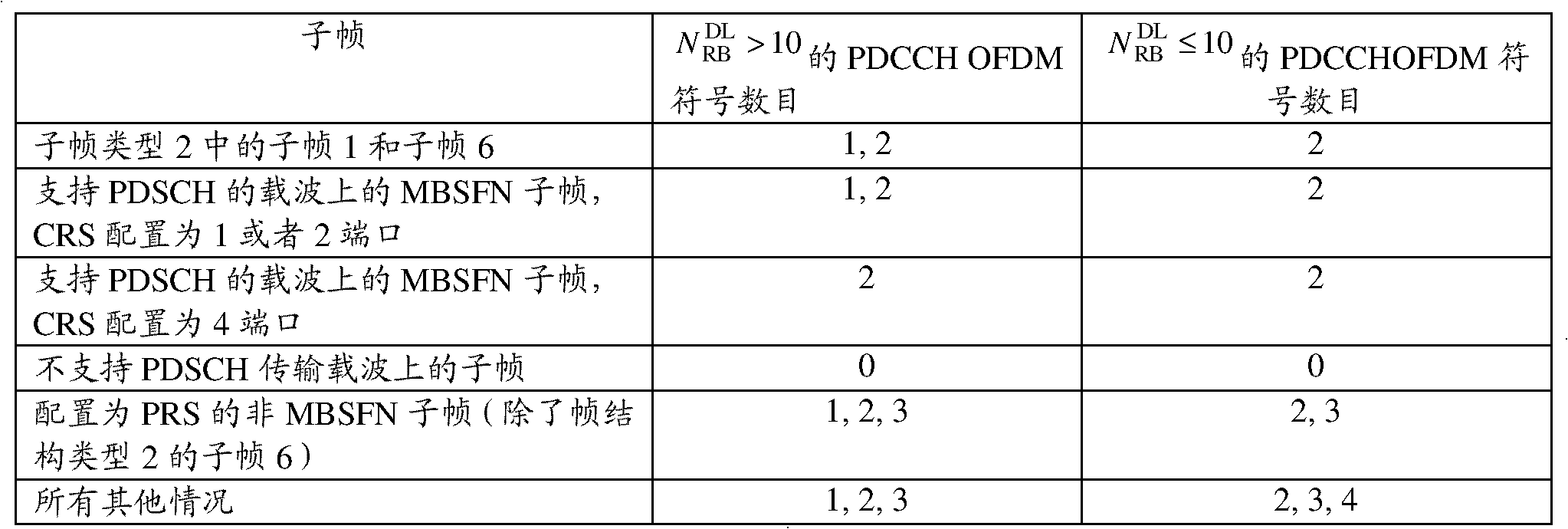Transmitting method, transmitting system, network side device and receiving side device for controlling channels
A technology of network side equipment and control channel, applied in the direction of diversity/multi-antenna system, space transmit diversity, etc., can solve the problem of no proposed control channel transmission method, etc.
- Summary
- Abstract
- Description
- Claims
- Application Information
AI Technical Summary
Problems solved by technology
Method used
Image
Examples
Embodiment 1
[0103] The network side sends ePDCCH information to the receiving side in the PDSCH area, and the network side can use multiple ports to send ePDCCH information to the receiving side, for example, antenna ports 7 and 8 can be used to send ePDCCH to the receiving side.
[0104]The receiving side obtains ePDCCH information by blindly detecting the ePDCCH port in the PDSCH area. The blind detection process can be described as follows:
[0105] The UE receives ePDCCH information in the PDSCH area, and then blindly detects all possible ports in sequence. For example, it can be assumed that ePDCCH is sent on port 7, then the receiving side first receives ePDCCH information according to port 7, and then uses the C-RNTI on the receiving side to detect The CRC of the received information is detected. If the CRC check result is 1, the receiving side switches to another possible port. Assume that the ePDCCH is sent on this port. For example, if it is sent on port 8, then perform blind det...
Embodiment 2
[0107] The network side sends ePDCCH information to the receiving side in the PDSCH area, and the network side can use multiple ports to send ePDCCH information to the receiving side, for example, antenna ports 7 and 8 can be used to send ePDCCH to the receiving side.
[0108] The receiving side determines the sending port of the ePDCCH by receiving or blindly detecting primary control information in the PDCCH region or the PDSCH region.
[0109] The primary control information of the PDCCH area or the PDSCH area contains the port-related information of the ePDCCH. For example, this primary control information can contain 1 or 2 bits to indicate the port 7 or port 8 or port used by the ePDCCH on the receiving side. 7, 8. If ePDCCH is limited to only one layer of transmission, then only 1 bit is required for notification; if ePDCCH is limited to maximum two layers of transmission, then only 2 bits are required for notification.
Embodiment 3
[0111] The network side sends ePDCCH information to the receiving side in the PDSCH area, and the network side can use multiple ports to send ePDCCH information to the receiving side, for example, antenna ports 7 and 8 can be used to send ePDCCH to the receiving side. The network side notifies the receiving side of the port number used by the ePDCCH sent by it through RRC signaling. The receiving side determines the port number used by the ePDCCH through the received RRC signaling, and then uses the port to perform blind detection or reception of the ePDCCH.
PUM
 Login to View More
Login to View More Abstract
Description
Claims
Application Information
 Login to View More
Login to View More - R&D
- Intellectual Property
- Life Sciences
- Materials
- Tech Scout
- Unparalleled Data Quality
- Higher Quality Content
- 60% Fewer Hallucinations
Browse by: Latest US Patents, China's latest patents, Technical Efficacy Thesaurus, Application Domain, Technology Topic, Popular Technical Reports.
© 2025 PatSnap. All rights reserved.Legal|Privacy policy|Modern Slavery Act Transparency Statement|Sitemap|About US| Contact US: help@patsnap.com


